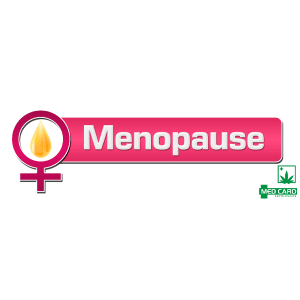
How Does Medical Marijuana Help With and Treat Chronic Pain?
Did you know that chronic pain is actually the number one reason cited for applying for a medical marijuana card? In this article, we’re going to discuss how you can use medical marijuana to treat chronic pain. We will also present some of the evidence that shows the efficacy of marijuana in treating pain as well as the best cannabis strains for pain.
Treating Chronic Pain With Marijuana and the Best Cannabis Strains For It.
The evidence for the efficacy of medical marijuana in treating pain is mounting. In fact, the evidence is so compelling that lawmakers in 33 states and numerous countries across the globe have legalized the use of medical marijuana to treat chronic pain.
According to a report by Reuters, studies show that almost two-thirds of medical marijuana patients are using the drug to treat chronic pain.
An estimated 1 million or more patients around the world are treating their pain with marijuana. There are more than 300,000 chronic pain patients in California’s medical marijuana program alone.
Let’s go over some of the characteristics of chronic pain including causes and treatments, and then we’ll talk about how to use medical marijuana to relieve chronic pain.
Overview
- There are countless different types of pain. So, what exactly qualifies as chronic pain?
- The term “chronic” in this case means persisting for a long time or constantly recurring.
- This is as opposed to acute pain which is usually the result of an injury or temporary illness lasting shorter than three months.
- Pain is generally considered to be chronic when it lasts more than a few months and requires ongoing treatment.
In today’s world, chronic pain has become common since it is associated with many medical conditions, including cancer, heart diseases, HIV/AIDS, past surgery, back injury, arthritis, migraine or infection and diabetes etc. In the United States of America, for instance, chronic pain is one of the leading causes of long term disability.
Even though most marijuana-based products are yet to be approved by the United States Food and Drug Administration (FDA), marijuana is increasingly becoming a popular alternative to traditional pain relieving medications, especially opioids.
There is anecdotal evidence which suggests that marijuana and its compounds are helpful in the relief of some types of pains. Research has actually proven that both THC and CBD which are substances in cannabis do not only provide an effective relief from pain, but can equally be a safer choice than conventional medicine.
Chronic pain statistics
The evidence for the efficacy of medical marijuana in treating pain is mounting. In fact, the evidence is so compelling that lawmakers in 33 states and numerous countries across the globe have legalized the use of medical marijuana to treat chronic pain.
According to a report by Reuters, studies show that almost two-thirds of medical marijuana patients are using the drug to treat chronic pain.
An estimated 1 million or more patients around the world are treating their pain with marijuana. There are more than 300,000 chronic pain patients in California’s medical marijuana program alone.
Many arguments have been advanced by scientists on why marijuana is probably the best alternative to conventional medication in the treatment of pain. First of all, there is lower risk of addiction with marijuana, unlike opioids-based medications. The truth is that one of the greatest disadvantages of using opioid-based medications to alleviate pain is addiction. Of course, this has resulted to public health concerns with countries like the United States and Canada being largely affected.
According to statistics from the Canadian Centre on Substance Use and Addiction, the number of people that were hospitalized as a result of opioid poisoning increased by up to 30 percent between 2007/2008 and 2014/2015.
Let’s go over some of the characteristics of chronic pain including causes and treatments, and then we’ll talk about how to use medical marijuana to relieve chronic pain.
Most common types of chronic pain
According to Healthline.com some of the most common types of chronic pain include the following:
- Chronic headaches/migraine
- Chronic neck and back pain
- Chronic joint pain
- Chronic nerve pain
- Psychogenic pain (not caused by disease, injury, or nerve damage)
Most common Qualifying medical conditions that cause chronic pain
Some of the most common medical conditions that produce chronic pain include the following:
- Cancer
- Osteoarthritis
- Rheumatoid arthritis
- Repetitive motion injury
- Bursitis
- Tendinitis
- Chronic fatigue syndrome
- Endometriosis
- Herniated or Bulging Disc
- Fibromyalgia
- Inflammatory bowel disease
- Interstitial cystitis
- Temporomandibular joint dysfunction (TMJ)
- Degenerative Disc Disease
- Vulvodynia
Most common medications used to treat chronic pain
Oftentimes patients suffering from chronic pain will try to treat their symptoms with traditional medications before trying medical marijuana.
Some of the more common medications used to treat chronic pain include the following:
Over-the-counter pain relievers
Acetaminophen (Tylenol)
Aspirin (Bufferin, Excedrin, etc.)
Ibuprofen (Advil)
Opioids
Morphine
Codeine
Hydrocodone
Adjuvant analgesics
antidepressants
Anticonvulsants
We all know that opioids are dangerous. In fact, the nation is in the midst of an opioid overdose epidemic.
You might think that over-the-counter medications are safer. Although they are safer to some extent, pain pills are not without their dangers.
Nonsteroidal anti-inflammatory drugs (NSAIDs) such as ibuprofen have been shown to cause GI bleeding or kidney damage with chronic use while acetaminophen (Tylenol) toxicity is the second most common cause of liver transplantation worldwide. In fact, this is responsible for 56,000 ER visits, 2600 hospitalizations, and 500 deaths per year in the U.S., according to a report in Science Daily.
None of these problems exist with medical marijuana. Marijuana is 100 percent non-toxic. Zero overdose deaths have been attributed to the use of medical marijuana. That is as opposed to tens of thousands of deaths annually attributed to opioid use.
There is strong evidence that medical cannabis can indeed provide relief and a better quality of life for people living with chronic pain. According to current research, the use of marijuana in treating chronic pain is as effective as opioids, but only that it comes with by far fewer side effects like addiction potentials as well as other health risks.
The fact that cannabis also treat sleep disorders and improves sleeping patterns goes a long way to corroborate the fact that it can as well relieve chronic pains. This assertion can be explained by the fact that when people are deeply asleep, they are likely to feel lesser or no pains.

Treating Chronic Pain with Medical Cannabis
Can you get a medical marijuana card for chronic pain?
Currently, all states with medical marijuana programs permit the use of cannabis for the treatment of some form of pain.
Just recently, Connecticut became the last U.S. state among 33 states with medical marijuana programs to add chronic pain to the state’s list of qualifying conditions.
Although all states with medical marijuana programs list some type of pain among their qualifying conditions, the exact language and rules vary from state to state.
For example, while some states list conditions such as fibromyalgia, migraines, neuropathy, and so forth, a few states only permit the use of medical marijuana as a substitute for opioids.
Moreover, in some states, the determination of whether or not a patient’s chronic pain qualifies for medical marijuana is in the hands of the attending physician.
You can find out if your chronic pain qualifies you for a medical marijuana card in your state by calling your local medical marijuana doctor. They will usually offer a free phone consultation to see if they can help you.
Marijuana & Chronic Pain Stories - Video
Studies on medical marijuana for chronic pain
Below are some quick summaries of the results of studies into the use of medical marijuana for chronic pain. You can find links to these and other studies at the end of this article.
- A review of medical literature on marijuana and chronic pain from 1948 to March 2015 suggests that the efficacy of marijuana for treating chronic pain, neuropathic pain, and spasticity due to multiple sclerosis “is supported by high-quality evidence.”
- A number of clinical trials have demonstrated that smoking cannabis reduces neuropathic pain in patients with HIV by more than 30 percent compared to placebo.
- Researchers at the University of California at San Diego reported that inhaled cannabis significantly reduced capsaicin-induced pain in healthy volunteers. Capsaicin is the compound found in chili peppers that makes them hot and spicy.
- A University of California at Davis clinical trial showed that both high and low doses of inhaled cannabis reduced neuropathic pain in subjects unresponsive to standard pain therapies.
- Researchers at McGill University reported that smoked cannabis significantly relieved pain, sleep quality, and anxiety in participants with refractory pain for which conventional therapies had failed.
- Another clinical trial published in the National Library of Medicine showed that cannabis relieved pain sensitivity and increased pain tolerance in healthy subjects that had been exposed to painful stimuli.
- A 2015 study appearing in The Journal of Pain reported that vaporized cannabis provides “a dose-dependent reduction in diabetic peripheral neuropathy pain in patients with treatment-refractory pain.”
- A study undertaken in 2019 showed that cannabis could be an effective treatment option for both pain relief and insomnia and that 80% of participants found it was very or extremely helpful.
- In the above study, 88 percent of participants were able to stop taking opioids and 83 percent were able to reduce or stopped taking sleep aids.
- A review of more than 10,000 scientific studies by the National Academies of Sciences, Engineering, and Medicine concluded that whole-plant cannabis is effective for the treatment of chronic pain in adults.
- In a 2016 clinical study, 44 percent of patients reported a reduction in the use of opiates. And a 2017 survey showed that 97 percent of respondents were able to decrease the amount of opioids they consume.
That might look like a lot of evidence, but there is plenty more where this came from.
Oftentimes you’ll read that the evidence is insufficient and that more studies need to be undertaken to determine the true safety and efficacy of medical marijuana for the treatment of chronic pain.
Yes, more study needs to be done, however, considering pain reduction is the number one reason that patients use medical marijuana, and considering the fact that marijuana is far safer than opioids and other pharmaceuticals used to treat pain, you might not want to wait around for more research results.
Marijuana strains reported to help with Chronic Pain:
According to user reviews, these are the three top marijuana strains for treating chronic pain:
- Jack Herer
- AK-47
- Bubba Kush
- Blue Dream
- White Widow
- ACDC – Very low THC, good for daytime use
- Pineapple Express
- Harlequin
- Granddaddy Purple
- Mob Boss
- Citrus Farmer
- Strawberry Diesel
- Slurricane
There are two main compounds produced in cannabis that are thought to be responsible for relieving pain — THC (delta 9 tetrahydrocannabinol) and CBD (cannabidiol).
THC is the intoxication-inducing cannabinoid compound. CBD, on the other hand, has no intoxicating effects.
Generally, a balance of THC and CBD is believed to be the most effective at treating pain. However, cannabis affects each patient differently.
Many patients find that high-CBD, low-THC cannabis works just fine in treating their pain. Others find much greater relief from strains that are higher in THC.
Another factor that determines the effects of a marijuana strain is the combination of compounds known as terpenes. Terpenes are the oily compounds that give marijuana its distinctive turpentine-like aroma.
Some terpenes such as linalool, myrcene, and caryophyllene are better than others at mitigating pain. It follows, therefore, that marijuana strains which contain these compounds are better than others at treating chronic pain.
Before breeders began creating new cultivars of marijuana, there were two basic strains — indica and sativa. Each of these produced a particular set of terpenes. Indicas were known to provide more relaxation effects while sativas had more energizing effects.
However, over the years, breeders have created an array of strains with a wide range of terpene and cannabinoid content. There are now marijuana strains that are good for treating chronic pain during the day or evening.
Keep in mind that each of these strains produces a unique set of cannabinoids and terpenes. While some strains might be great for daytime use, others might put you to sleep and are better for nighttime use.
Make sure you discuss your options with a qualified and experienced budtender who can recommend a marijuana strain for chronic pain that will not only relieve your symptoms but will also fit into your lifestyle.
How To Get Medical Marijuana for Chronic Pain
If you are suffering from chronic pain or another health issue and are a resident of a legal state interested in trying medical marijuana for treatment, you will first need to consult with a certified doctor. To get started, fill out the MMJ patient registration form, press submit and your on your way to get or renew your medical marijuana card. See if you qualify today!

Sign Up for Medical Cannabis Today!
For potential patients, if you’re ready, we make it easy to connect with a medical marijuana doctor nearby or online. If you are interested in getting certified, please fill out the MMJ patient registration form below and press submit to get started. See if you qualify today!

MedCard Registration Form

Sources and additional reading
- Could marijuana be an effective pain alternative to prescription medications?
- Chronic pain most common reason U.S. patients get medical marijuana
- Healthline – What Causes Chronic Pain?
- Reuters – Chronic pain most common reason U.S. patients get medical marijuana
- Study says 1 in 5 Americans suffers from chronic pain
- BOOK: Cannabis for Chronic Pain: A Proven Prescription for Using Marijuana to Relieve Your Pain and Heal Your Life
- BOOK: Cannabis for Seniors
Clinical studies on medical marijuana for chronic pain
- Medical Marijuana and Chronic Pain: a Review of Basic Science and Clinical Evidence
- Drug and Alcohol Review – Urine drug testing of chronic pain patients: licit and illicit drug patterns
- Cannabis and Cannabinoid Research – Cannabis as a substitute for opioid-based pain medication: Patient self-report
- Critical Reviews in Plant Sciences – Medicinal uses of marijuana and cannabinoids
- Neuropsychopharmacology – Smoked medicinal cannabis for neuropathic pain in HIV: a randomized, crossover clinical trial
- Anesthesiology – Dose-dependent effects of smoked cannabis on Capsaicin-induced pain and hyperalgesia in healthy volunteers
- Journal of Pain – A randomized, placebo-controlled, crossover trial of cannabis cigarettes in neuropathic pain
- CMAJ – Smoked cannabis for chronic neuropathic pain: a randomized controlled trial
- Neuropsychopharmacology – Comparison of the analgesic effects of dronabinol and smoked marijuana in daily marijuana smokers
- Journal of Pain – Efficacy of inhaled cannabis on painful diabetic neuropathy.
- The Journal of Pain – An exploratory human laboratory experiment evaluating vaporized cannabis in the treatment of neuropathic pain from spinal cord injury and disease
- British Journal of Clinical Pharmacology – Cannabinoids for treatment of chronic non-cancer pain; a systematic review of randomized trials
- The Clinical Journal of Pain – Cannabinergic pain medicine: a concise clinical primer and survey of randomized-controlled trial results
- Journal of Neuroimmune Pharmacology – Cannabinoids for the treatment of chronic non-cancer pain: An updated systematic review of randomized controlled trials.
- Journal of Pain – Cannabis for the Management of Pain: Assessment of Safety Study
- Phytotherapy Research – Antihyperalgesic effect of a Cannabis sativa extract in a rat model of neuropathic pain
- Journal of Symptom Management – Multicenter, double-blind, randomized, placebo-controlled, parallel-group study of the efficacy, safety and tolerability of THC: CBD extract in patients with intractable cancer-related pain
- Clinical Pharmacology & Therapeutics – Cannabiniod-opioid interaction in chronic pain
- The Clinical Journal of Pain – The effect of medicinal cannabis on pain and quality of life outcomes in chronic pain: A prospective open-label study
- The Journal of Pain – Medical cannabis use is associated with decreased opiate medication use in a retrospective cross-sectional survey of patients with chronic pain
- American Journal of Public Health – Medical marijuana laws and the prevalence of opioids detected among fatally injured drivers
















